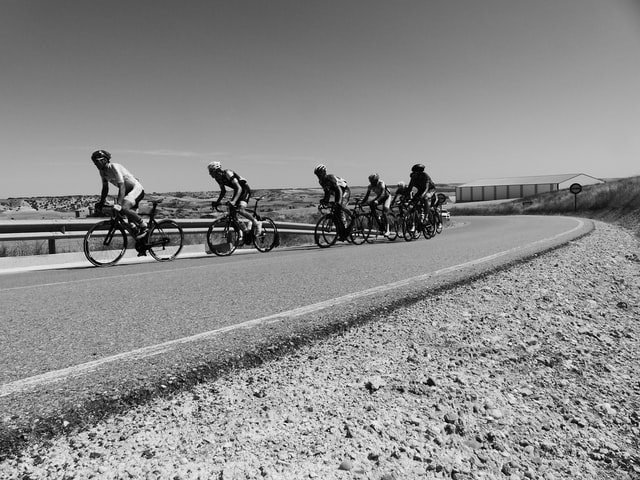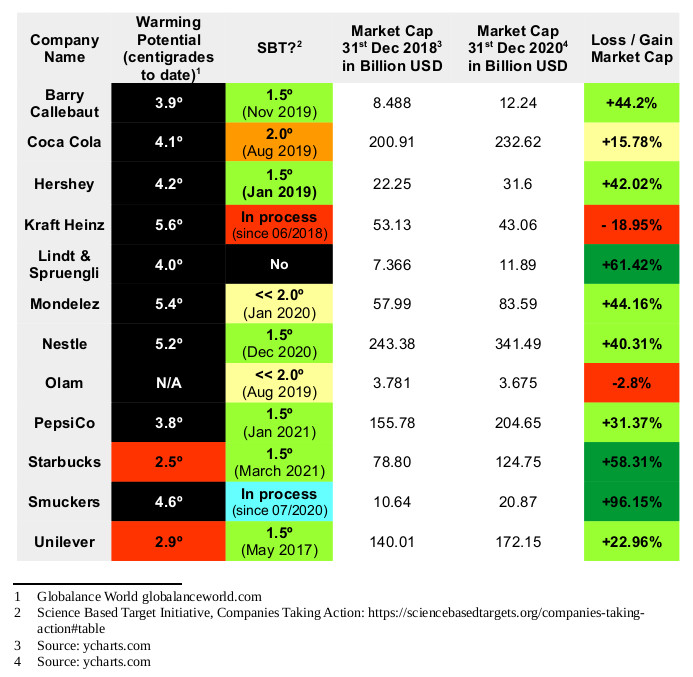
Over the last few months I have looked at key players in Footwear & Fashion, in the Finance Industry, and in the Energy Sector, and how their performance looks like in terms of Climate Trajectory.
In this post I would like to look like at Food & Agri companies(part of the FMCG sector) and ask:
- What is their Climate Trajectory?
- Do they engage with the Science Based Target Initiative? and
- How did their market capitalisation develop over the most recent past, specifically the last couple of years, as efforts to decarbonise are speeding up?
The Why
Carbon – together with biodiversity – is one of THE most critical dimensions among the Planetary Boundaries. Because the already existing overshoot is putting our civilisation at risk. So far nothing new under the sun.
However, while biodiversity overshoot is not easy to measure, carbon is a different story entirely. It is so relatively easy to measure that doing so is even enshrined in reporting requirements for listed companies. Example of which are the TCFD (Taskforce for Climate-related Financial Disclosure) recommendations – by now often indeed turned into a requirement – to show investors scenarios with varying carbon/temperature trajectories and the risk for the company.
The big elephant in the room is of course:
- How do companies perform right now in terms of their carbon footprint? And:
- Do they have at the least commitments to work on a Paris Agreement trajectory?
The icing on the cake for agri food companies: a loot at their market capitalisation, and what it tells us about how the finance industry is concerned – or not – about their readiness for Climate Change scenarios.
Agri Food and the Paris Agreement
Most readers will know the Science-based Targets initiative. A 5-step process for companies to commit, then set, and subsequently report against climate goals in alignment with the Paris Climate Agreement. Any company with aspirations to be public about their commitment can do so by signing up, and then moving through this quite rigorous process.
What is much tougher to know is the companies’ status quo , i.e. where they are right now on this journey. And how big the spread between status quo and publicly committed aspiration is. And hence also, how challenging their effort may proof to be in the years to come.
When I looked at fashion companies as well as energy companies and their carbon trajectory, I was able to rely on data coming out of the finance industry (specifically: from GlobalanceWorld), intended to scrutinise investable assets. The same held true this time also as I was looking at agri food companies.
(Side note: Ironically though, the same was not the case when I looked at the Finance Industry.)
Hence, armed with the list of participants in the Science-Based Targets initiative, and fairly recently published insights from GlobalanceWorld, the following table summarises the insights we can glean by comparing them side-by-side:

and their respective market capitalisation over the past two years.
Comparison: Agri Food Companies, how they perform relative to the Paris Climate Agreement, and their respective market capitalisation over the past two years.
Note: these are evidently just a few of the energy companies available. They selection is driven by data availability, size of the respective companies, and then just the curiosity of the author.
Looking at the table, we can gain two key insights:
- Most agri food businesses seem to have recognised the signs of the time and start to engage with the Climate Change topic, and are showing clear signs of gearing up significant carbon reduction efforts.
- And yet: investors’ willingness to inject money does seem to be predominantly driven by factors other than proactive action on climate related issues.
This paradox must not be lost on us, because it illustrates the kind of battle that is currently taking place in and around these companies: the companies have most likely realised how Climate Change is impacting already, or will impact soon enough, the stability of their company: the sourcing geographies in particular …
Just to take a couple of examples: Lindt & Spruengli, but also Nestle, deal in commodities such as Cocoa or Coffee to just name two. We do know that the sourcing regions of these (Africa, South America, and for coffee certain areas of Asia) already experience more extreme weather as a consequence of shifted climatic patterns. These shifts make it ever harder, and less profitable, for the farmers to grow either coffee or cocoa. And that is before even looking at the fact that already in the present these communities are suffering from a rapidly ageing population as the younger generations do not succeed their parents.
However, investors seem to ignore, or conveniently overlook, these facts.
One rationale might be that indeed with the growing middle class in developing countries, the market potential for packaged goods such as refine chocolate, bottled fizzy drinks etc. is growing at the very moment. And likely will do so far maybe another handful or so of years.
The agri food industry – and specifically companies such as the ones listed above – are for a reason a part of the ‘Fast Moving Consumer Goods’ (FMCG) Industry: their goods have relatively short lead and turn round times.
At the same time this is the exact Achilles heel that – in my view – investors overlook: the supply and production of for example Cocoa may well come down crashing within a couple of fiscal years only … once the climate and social tipping point has been past.
If we compare these result with the ones we obtained in the post where we looked at the energy sector – which by evidently has to look at much longer investment and pay back periods – the contrast could not be more significant!

